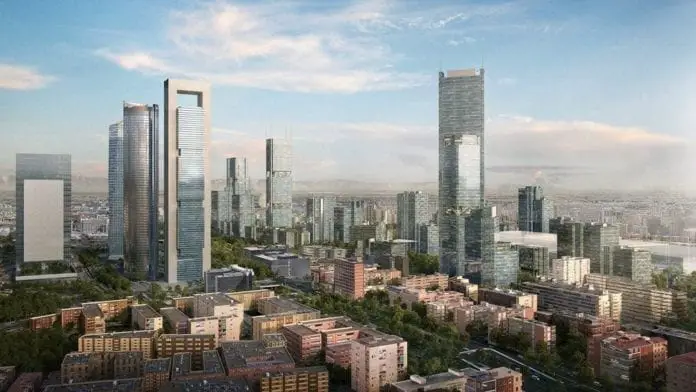Madrid Nuevo Norte project for years known as Operación Chamartín, is an urban development programme in Madrid city, developed and promoted by private company called Distrito Castellana Norte. After years of administrative struggle, construction works are set to finally to complete by 2045. When constructed in its entirety from its current plans, the scheme will reshape 2.65 million square metres of land and offer an estimated 241,700 new jobs.
Read also:Padma Multipurpose Bridge project timeline and all you need to know
Scope of the project.
Madrid Nuevo Norte project specifies on creation of 348 office structures and 11,700 apartments. Furthermore, the skyline of the northern city’s business district, which is currently still controlled by the Cuatro Torres, will get atleast three more towers at a height of 190 to more than 250 metres. At a suggested height of approximately 330 metres, the highest of these skyscraper would become the tallest tower in the European Union after completion.
In terms of public transport, the project has a short metro line with three stations, in conjunction with a novel priority bus line. A new Cercanías station is also to be developed, probably above the northernmost of the metro stations. Chamartín railway station will also be extended and developed in a modern way, turning it again into the main source of the Spanish high velocity rail network AVE.
Project Timeline.
1993
The Madrid Nuevo Norte project was first tabled by state-owned rail transport enterprise Renfe and the Ministry of Development. Was projected to be an extension to Chamartín railway station with subsequent rearrangement of the surrounding neighbourhoods. However, the project soon delayed by landowners as they fought their dispossession in court, the legal process was to take ultimately 15 years to be definitively concluded.
2004
The programme’s realization was impeded due to the Madrid train bombings tragedy. Coincidentally, it was on the day the first phase of the then-Operación Chamartín was to get approved. The political fallout of the tragendy upended the majority of former government’s official. The government under José Luis Rodríguez Zapatero proceeded to agree key aspects of the project.
2008
In December, Zapatero-led government and DUCH arrived at a partial compromise, the recession following the 2007–2008 financial disaster that had already begun to unleash its effects on the banking and real estate sector in Spain.
2013
An attempt at starting the project, brought by the municipal government of mayor Alberto Ruiz-Gallardón, was shut down by the High Court of Madrid.
2015
Manuela Carmena had won the municipal election and the project was tabled again. Disagreement arose between the new mayor and some commercial partners. The project’s named was changed to Madrid Nuevo Norte.
2019
On 29 July, the new project was accepted, receiving unanimous support from all parties represented in the Madrilenian townhall.
2020
In July, the project was registered with both LEED and BREEAM, two notable certification programmes related to sustainability in urban planning The Madrid Nuevo Norte project will become the first Spanish project to obtain either certification
2021
Commencement of the project. The expansion of the metro should begin in early 2022 and last two years with the first finished building estimated to complete by 2027.

